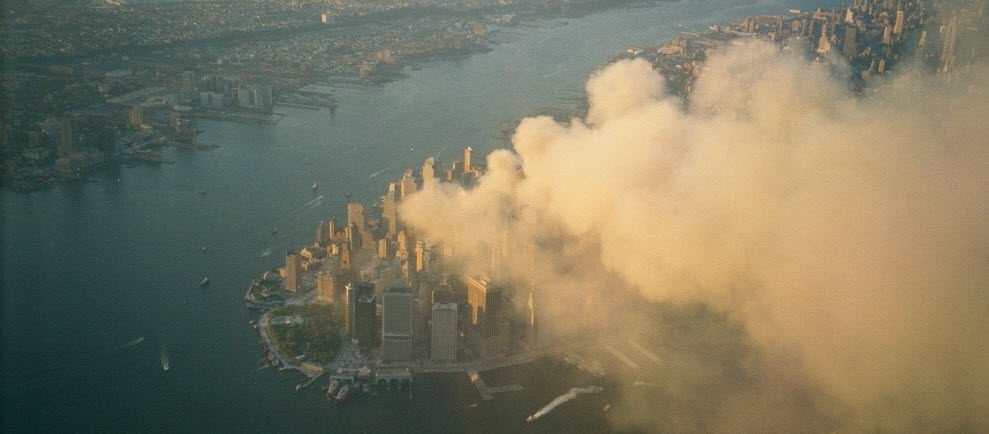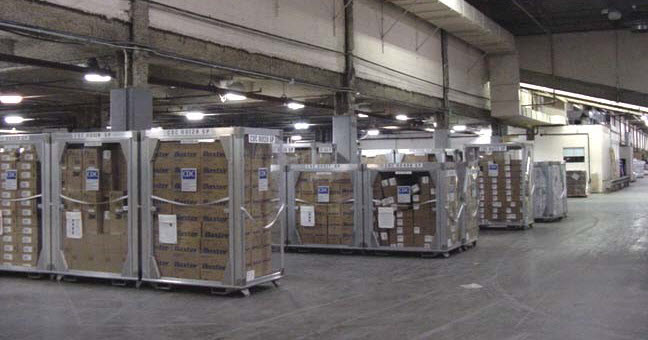On the morning of Sept. 11, 2001, a small group of federal public health staff activated its emergency plan as part of the U.S. government’s immediate response to the deadliest terrorist attack on American soil. Established in 1999, the National Pharmaceutical Stockpile (NPS) was in its infancy when the events of 9/11 unfolded and was quietly housed in the Centers for Disease Control and Prevention’s (CDC) National Center for Environmental Health. It was not until 2003 that the NPS would become the Strategic National Stockpile (SNS), which in 2018 transitioned to the Office of the Assistant Secretary for Preparedness and Response (ASPR) within the U.S. Department of Health and Human Services.

Acting SNS Director Steve Adams, who was one of the original stockpile responders, recalls how staff mobilized and stood up operations that day to support anticipated requests.
“The morning the first tower was struck, I was working in Atlanta with a small staff of 22 people who comprised the national stockpile team,” he said. “At that time, the NPS had not yet become a branch, CDC did not have a designated emergency operations center, and the NPS managed operations from a small ‘dual use’ conference room where we had to set up folding tables and bring in laptops to begin operations. By the time the second tower was hit, the stockpile staff was in full response mode and working to assess which emergency assets and stockpiled supplies might be needed to treat the large numbers of trauma victims we anticipated.”

Stockpile staff were in constant contact with New York City (NYC) officials on the morning of Sept. 11, discussion the medical countermeasures and supplies that could be provided and when they could arrive. After NYC’s formal request for assistance was approved, stockpile staff deployed a 12-Hour Push Package, which is comprised of 50 tons of broad-spectrum medical countermeasures and supplies; ventilators and ancillary supplies from managed inventory; additional burn and blast supplies; and a Technical Advisory Response Unit (TARU) of personnel led by Adams. All requested supplies were delivered to a NYC warehouse in less than 12 hours and staged by the TARU responders. The stockpile also rapidly acquired and delivered large quantities of N95 respirators and other personal protective equipment needed by first responders at the World Trade Center site.
Sue Gorman, SNS Science Branch chief and associate director for science, is one of three original staff members from the early days of the stockpile. Gorman, a pharmacist and toxicologist, had trained for biological and terrorist attacks. She remembers the long, intense hours she and her colleagues worked supporting response efforts on the ground. “With a third of the NPS team deployed to NYC with the TARU, the remaining staff split up and worked 24/7 shifts for almost three weeks. There were no delineated branches or rosters of deployable response teams like we currently have in the SNS. Staff who didn’t deploy stayed back at headquarters to support the TARU. These staff members were performing various duties related to finance, communication, logistics, planning, and operations.”
Gorman recalled the overwhelming volume of public inquiries that poured in, including calls from companies that wanted to donate burn cream, bandages, and supplies to augment what was available in the stockpile. She noted that a power outage occurred in the makeshift operations conference room in Atlanta, making it difficult to communicate with field staff and compounding efforts to stay in touch as events unfolded over the course of the response.

Not long before the events of 9/11, the stockpile staff had worked with colleagues at the NYC Department of Emergency Operations, which was responsible for the city’s emergency medical countermeasure planning. This collaboration proved important during the incident, as the TARU team and NYC officials were already familiar with each other’s operations. When the events of 9/11 occurred, the stockpile and NYC had been in the process of planning an exercise around distribution of medical countermeasures.
Deploying people and materiel effectively were the critical pieces of the stockpile’s response. “We were in NYC within hours,” Adams recalled. “The NPS functioned well because of the investments made in preparation, planning, and exercising.”
Although all air traffic was grounded, stockpile responders were able to conduct lifesaving missions because of emergency plans already in place for these types of incidents. The stockpile had established and validated its relationship with the Federal Aviation Administration, which had established unique call signs to allow for four contracted aircraft to operate on behalf of NPS, even when air traffic was limited or grounded. Two of the aircraft were intended to move personnel and the other two were for transport and delivery of medicines and supplies. This established relationship proved vital as 9/11 events evolved and access to air space became critical.
SNS Operational Logistics Branch Deputy David Allen recalled the significance of flying to Ground Zero. “Our plane was the only plane in the sky,” he said. “As we approached New York, we were met by an Air Force escort. That was a surreal moment.”

During the flight, Allen remembers the pilot saying, “There’s no one else up here in the air.” Once on the ground, Allen, along with members of an air guard and U.S. Marines, repacked ventilators and ancillary supplies prior to movement into NYC. On the evening of 9/11, tractor-trailers carrying stockpile assets were escorted by state police to a warehouse in Queens where products were staged and ready for use.
The September 11, 2001, terrorist attacks prompted federal legislation and directives to strengthen public health emergency readiness in the United States. Since its beginning, the SNS has evolved its capabilities and answered the nation’s call to respond to multiple large-scale emergencies including floods, hurricanes, and emerging infectious diseases. The SNS also has supported numerous small-scale deployments for the treatment of individuals with life-threatening infectious diseases like anthrax, smallpox, and botulism.
In the past 22 years, the SNS has grown from just a few employees to a highly accomplished and dedicated staff of approximately 250 federal employees and contractors who lead the federal government’s largest stockpile of emergency medical countermeasures. A large part of the work SNS does is to remain flexible and scalable to respond to any need that arises.
Today’s SNS is part of the federal medical response infrastructure and can supplement medical countermeasures needed by states, tribal nations, territories and the largest metropolitan areas during public health emergencies. These supplies, medicines, and devices for lifesaving care can be used as a short-term, stopgap buffer when the immediate supply of these materials may not be available or sufficient. The SNS team works every day to prepare and respond to emergencies, support state and local preparedness activities, and ensure availability of critical medical assets to protect the health of all Americans.

